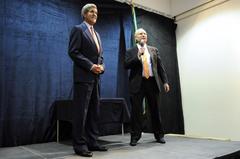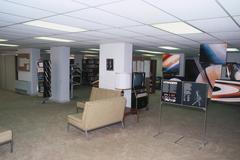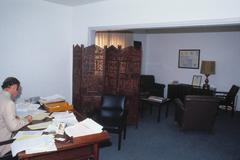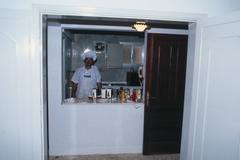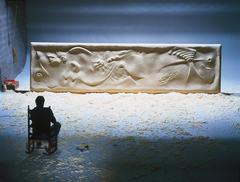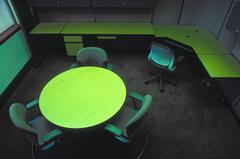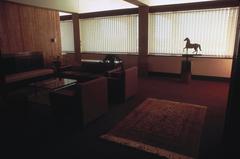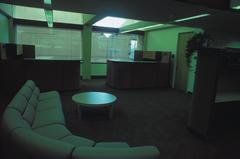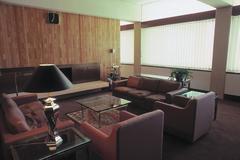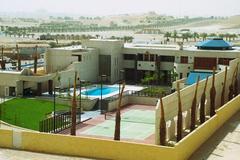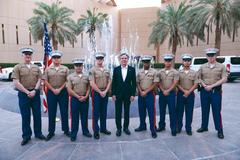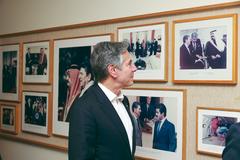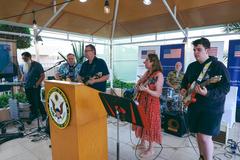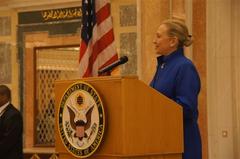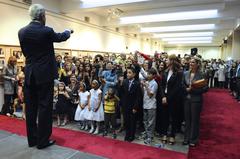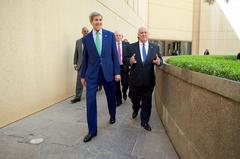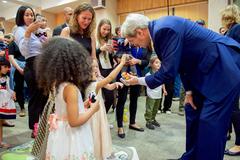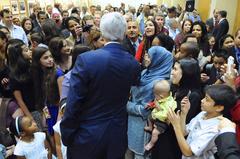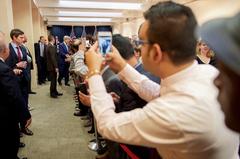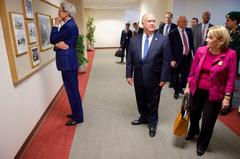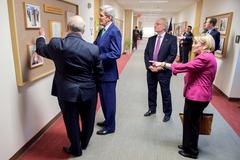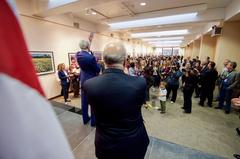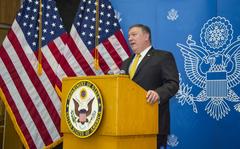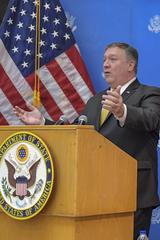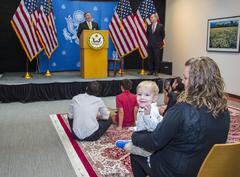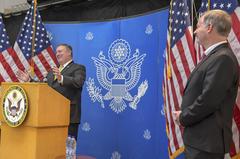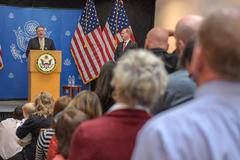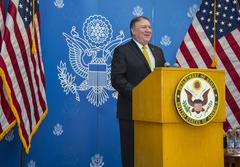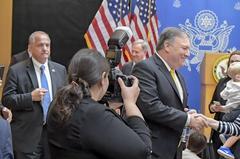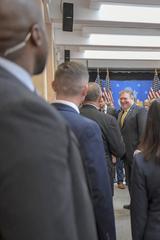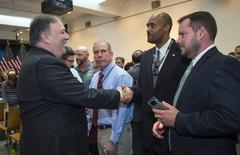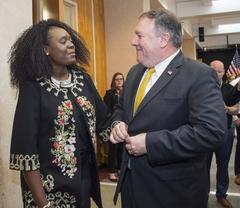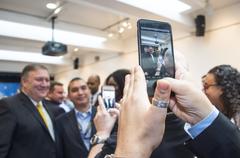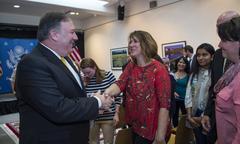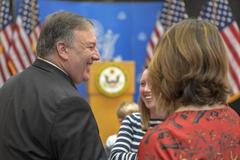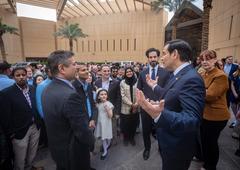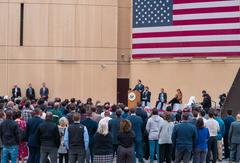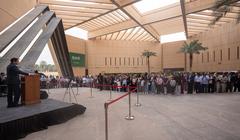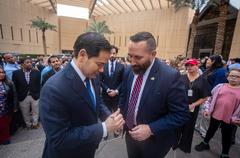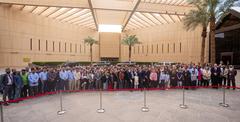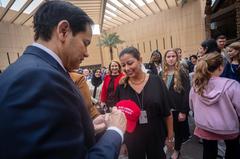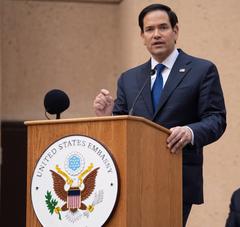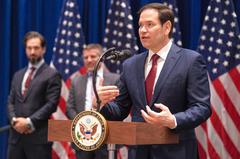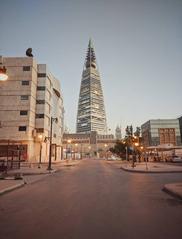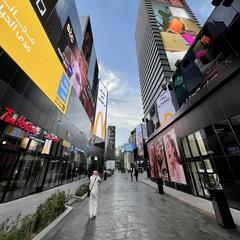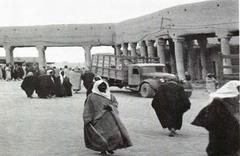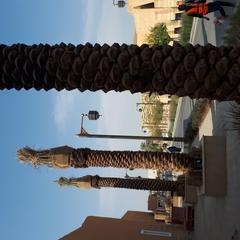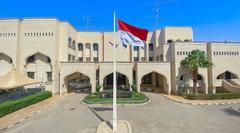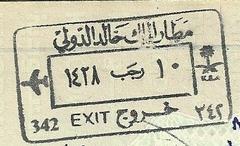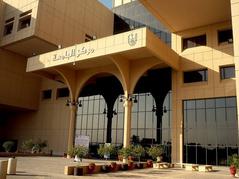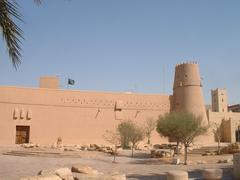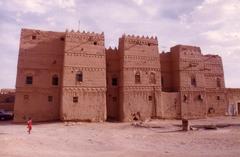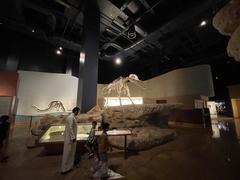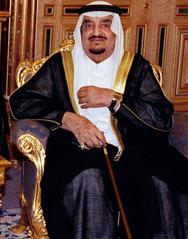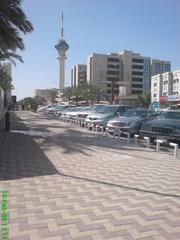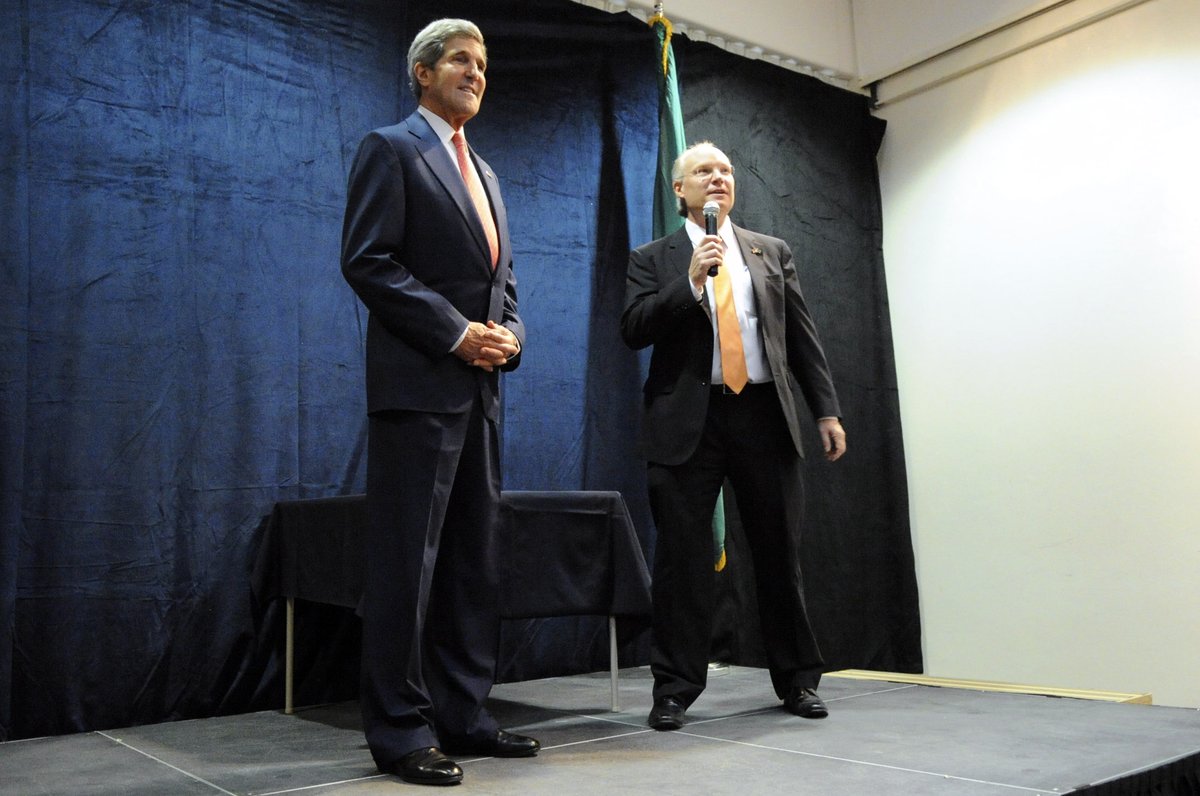
Visiting the Embassy of the United States in Riyadh, Saudi Arabia: Tickets, Hours, and Visitor Tips
Date: 15/06/2025
Introduction
The Embassy of the United States in Riyadh is a cornerstone of U.S.-Saudi diplomatic relations and a central hub for consular services, cultural exchange, and bilateral cooperation. Originally established as a legation in Jeddah in the early 1940s, the embassy has evolved in tandem with the deepening partnership between the two nations. Its history reflects Saudi Arabia’s growing geopolitical importance and the expanding scope of U.S. engagement in the region. Now located in Riyadh’s Diplomatic Quarter, the embassy continues to serve American citizens, facilitate visa services, and promote mutual understanding. This guide offers a comprehensive overview of the embassy’s history, visiting protocols, security measures, and nearby attractions, as well as practical tips for planning your visit. For official updates, consult the U.S. Embassy Riyadh website and U.S. Department of State travel advisories.
Contents
- Introduction
- Historical Overview
- Early Diplomatic Presence
- Relocation to Riyadh
- Architectural Evolution
- Visiting the U.S. Embassy Riyadh
- Location and Accessibility
- Visiting Hours and Appointments
- Security Protocols and Entry Requirements
- Accessibility and Visitor Support
- Travel Tips
- Nearby Attractions and Cultural Insights
- Diplomatic Quarter
- Riyadh Historical Sites
- Milestones and Key Events
- Frequently Asked Questions (FAQ)
- Conclusion and Recommendations
- References
U.S. Embassy Riyadh: History, Visiting Information, and Cultural Insights
Historical Overview
Early Diplomatic Presence
U.S.-Saudi diplomatic ties began in the 1940s, with the U.S. establishing its first legation in Jeddah in 1943. The initial diplomatic mission operated from a traditional house in Jeddah’s old city, serving as the primary avenue for American interests in the Kingdom. The legation’s elevation to embassy status in 1948 signified deeper political and economic cooperation as Saudi Arabia’s global energy role grew. In 1952, the mission moved to a beachfront site north of Jeddah, now the location of the U.S. Consulate General (sa.usembassy.gov/riyadh).
Relocation to Riyadh
In 1984, following a government initiative to centralize diplomatic activity, the embassy relocated to Riyadh’s Diplomatic Quarter. This secured district was purpose-built for embassies and international organizations, reflecting Riyadh’s rise as the nation’s administrative and political capital. The former Jeddah compound became the U.S. Consulate General, and a second Consulate General opened in Dhahran to serve the Eastern Province (travel.state.gov; sa.usembassy.gov/riyadh).
Architectural Evolution
The current embassy site, at Abdullah Ibn Hudhafah As Sahmi Street, Roundabout No. 9, was selected for its security and proximity to Saudi ministries (embassies.info). In December 2023, construction began on a new, sustainable, state-of-the-art compound blending Saudi design motifs with modern security and green technologies. Spanning 27.5 acres, the new facility will be the largest U.S. embassy in Saudi Arabia and a symbol of continued partnership (sa.usembassy.gov/building-for-the-future-united-states-breaks-ground-on-new-embassy-compound-in-riyadh).
Visiting the U.S. Embassy Riyadh
Location and Accessibility
- Address: Abdullah Ibn Hudhafah As Sahmi Street, Roundabout No. 9, Diplomatic Quarter (Safarat District), Riyadh
- Access: The Diplomatic Quarter is a secure, well-connected area near major landmarks such as Kingdom Centre and King Abdulaziz Historical Center (embassies.info).
Visiting Hours and Appointments
- Hours: Sunday: 7:30 AM – 11:30 AM; Monday–Thursday: 7:30 AM – 4:00 PM
- Closed: Fridays, Saturdays, U.S., and Saudi holidays
- Appointments: All visits for consular or visa services require an appointment, booked via the official embassy website. Walk-ins are not permitted.
Security Protocols and Entry Requirements
- Identification: Bring a valid government-issued photo ID (passport for non-Saudis, Iqama or national ID for Saudis).
- Entry: Only visitors with confirmed appointments are allowed entry.
- Prohibited Items: Electronic devices (phones, laptops, smartwatches, cameras), large bags, food, beverages, and prohibited substances (alcohol, pork, drugs, and non-Islamic religious materials) are not allowed.
- Security Screening: All visitors must pass through security checks. Photography and videography are strictly prohibited.
Accessibility and Visitor Support
The embassy is equipped for visitors with disabilities, including wheelchair access and assistance. Notify the embassy in advance if you require special accommodations.
Travel Tips
- Transportation: Use taxis or ride-hailing apps, as public transit options are limited in the Diplomatic Quarter.
- Arrival: Arrive 15–30 minutes early for security procedures.
- Dress Code: Modest attire is required; men should wear long pants and sleeves, women should cover arms and legs (abaya optional for foreign women).
Nearby Attractions and Cultural Insights
Diplomatic Quarter (Safarat District)
A secure, landscaped district with embassies, parks, walking trails, and art installations. Ideal for a stroll before or after your embassy appointment.
Riyadh Historical Sites
- King Abdulaziz Historical Center: Museums and gardens exploring Saudi history and culture.
- National Museum of Saudi Arabia: Exhibits on the Kingdom’s heritage.
- Masmak Fortress: 19th-century fort central to Saudi unification, now a museum open to the public.
For more on Masmak Fortress, see the Riyadh Tourism Official Website.
Milestones and Key Events
- 1943: First U.S. diplomatic mission in Jeddah
- 1984: Embassy relocates to Riyadh’s Diplomatic Quarter
- 2023: Groundbreaking on the new embassy compound, signifying modern bilateral cooperation (sa.usembassy.gov/building-for-the-future-united-states-breaks-ground-on-new-embassy-compound-in-riyadh)
Frequently Asked Questions (FAQ)
Q: What are the embassy’s visiting hours?
A: Sunday 7:30 AM – 11:30 AM; Monday–Thursday 7:30 AM – 4:00 PM. Closed Fridays, Saturdays, and official holidays.
Q: Are tickets or fees required to visit the embassy?
A: No tickets or entry fees are required. Appointments are mandatory for all services.
Q: Can I bring my phone or laptop into the embassy?
A: No. All electronic devices are prohibited.
Q: How do I schedule a visa or consular appointment?
A: Book online at sa.usembassy.gov/visas or sa.usembassy.gov/consular-services.
Q: Is the embassy accessible for visitors with disabilities?
A: Yes. Contact the embassy in advance for special accommodations.
Q: How can I receive embassy alerts or updates?
A: Enroll in the Smart Traveler Enrollment Program (STEP) for notifications.
Summary of Key Information and Visitor Recommendations
The U.S. Embassy in Riyadh stands as a vital institution reflecting the enduring partnership between the United States and Saudi Arabia. For those seeking consular services, planning ahead—by booking appointments, preparing documents, and understanding security protocols—ensures a smooth visit. The embassy’s modern facilities, commitment to accessibility, and evolving compound underscore its ongoing dedication to security and sustainability. Exploring the surrounding Diplomatic Quarter and nearby cultural sites like Masmak Fortress enriches your experience in Riyadh. Stay informed through official channels, enroll in STEP, and respect local customs for a safe and successful embassy visit (sa.usembassy.gov/riyadh).
References
- U.S. Embassy Riyadh Official Website
- Travel.State.Gov Saudi Arabia Information
- Building for the Future: United States Breaks Ground on New Embassy Compound in Riyadh
- Embassies.info U.S. Embassy Riyadh
- Riyadh Tourism Official Website
- Saudi Tourism Authority
Images and virtual tours are available on the official embassy and tourism websites for enhanced visitor planning.
